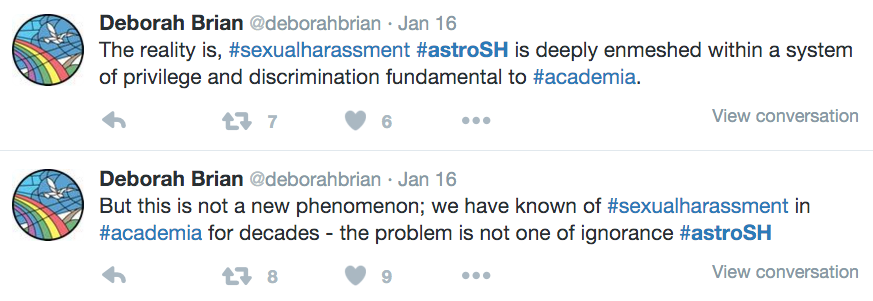Is science for everyone?
As the US government steps in to tackle sexual harassment, it’s time to ask, what is it going to take to fix this problem?

Sexism in science; is there a real problem? How do we fix it? When is everyone, including myself, going to shut up about it? Probably not for a while. And yes, I do realise that I could begin sounding like a broken record, considering this is the third piece I’ve written for Felix discussing the topic, but unfortunately the problem isn’t disappearing so neither will the analogous articles. Things are about to get a bit gross and very complicated.
Following the increased publicity around three high profile sexual harassment cases in US university science departments, democratic lawmaker Jackie Speier is proposing to Congress the strengthening of existing federal discrimination laws in order to tackle the issue at hand. Although the exact details haven’t been finalised, Speier has made it clear that the system needs to change and people should be held accountable. “It shouldn’t be like the Catholic Church, where once there was an establishment of paedophilia, they just move the priest to another parish”, Speier told reporters.
However, the proposed changes are not unanimously supported and some argue that the actual impact of these changes will never trickle down to the lab level. Many states have laws that explicitly prevent the sharing of employee personal records between Universities, which are themselves constantly under threat of lawsuits. However, what is clear to most people is that the current academic set up is untenable.
For those of you who haven’t been keeping up with these cases, which is understandable considering the whole thing is pretty depressing, here is a short synopsis. In a 2005 investigation recently released by congresswoman Speier, Arizona University unveiled that lead astronomer Timothy Slater created a workplace environment that involved lunchtime trips to a strip club, demeaning comments to female co-workers, and open leering at female undergraduates. The condemning report was released on the same day it was reported that a Caltech astronomer, Christian Ott, had harassed and fired two undergraduates from his lab after they filed a complaint against him. The whole situation turned into a massive scandal, partly because just three months earlier, a prominent astronomer from the University of Arizona, Geoff Marcy, was found guilty of sexually harassing female co-workers.

If social media is anything to go by, unfortunately these cases are only part of a wider trend. These high profile examples of sexism and sexual harassment have triggered the formation of a new hashtag, #astroSH, which is being used by scientists to share stories and voice opinions on the reality of being a woman in STEM, with emphasis on Astronomy. Such outcry has prompted institutes like NASA to put out statements reinforcing its commitment to inclusivity. Administrator Charles Bolden stated, “Let me be perfectly clear: NASA does not tolerate sexual harassment, nor does any organization seriously committed to workplace equality, diversity and inclusion.” Strong and encouraging words, but some argue that although scientific institutions wholly condemn sexism, there are no consequences for those who unfairly discriminate against women.
The worrying part of both the official and anecdotal cases is the general lack of repercussions faced by most of these individuals. Although the report about Timothy Slater is damning to say the least, he was allowed to stay at the University of Arizona until 2008 and now holds a science education chair position in the state of Wyoming. Geoff Marcy, the professor from the University of California has been allowed to continue calling himself the honorary title of “Professor Emeritus” since he technically chose to step down amidst widespread criticism, rather than being fired. Ott was never fired and CalTech allowed him to continue to work with undergraduates. This unaccountability has created a culture where victims of discrimination don’t feel able to report the harassment. A series of articles recently published by Forbes called “Deciding whether to report harassment in science” demonstrate that many cases don’t move through official channels because of a tendency to sweep the indiscretions of important professors under the rug.
So you can see how the whole thing is a bit of a mess and the scientific community is once more stuck, knowing action is needed, but remaining indecisive as to what that action should be taken. Just to clarify, no one is saying that all male scientists are sexist, chauvinistic pigs or that work place harassment is unique to STEM fields or only towards women in STEM. The fact that the problem is so hard to tackle seems to generally be the result of sexism, racism, homophobia and other general unpleasantness being prevalent within society and subsequently academia. But, science at its best doesn’t lead from behind nor does it sit on its hands waiting for the world to catch up. Personally I’d love for this problem to go away, if for no other reason, just so that I can write articles about literally anything else at this point.
It’s absurd and deeply worrying, that for a bunch of supposedly smart people, we still struggle with tackling what should be a simple issue.








